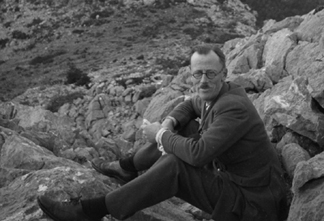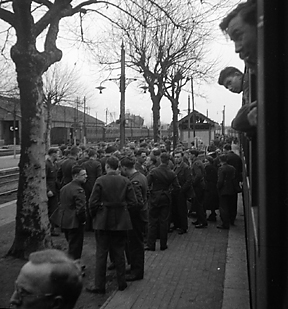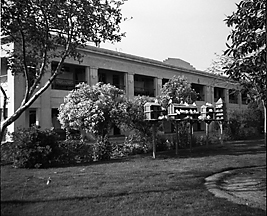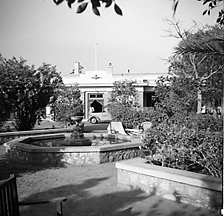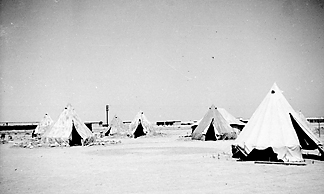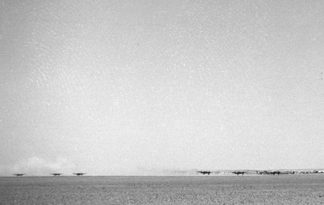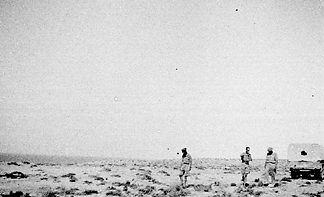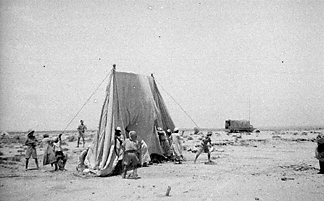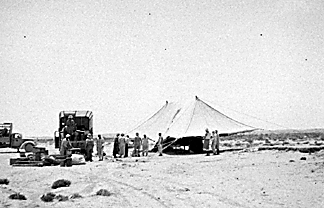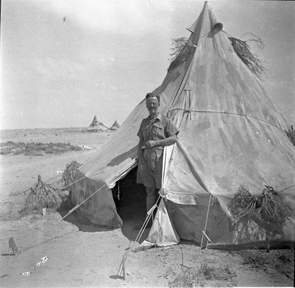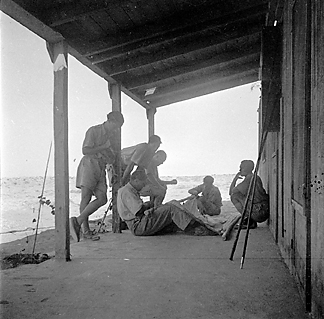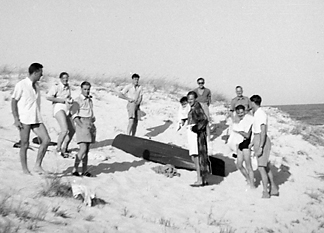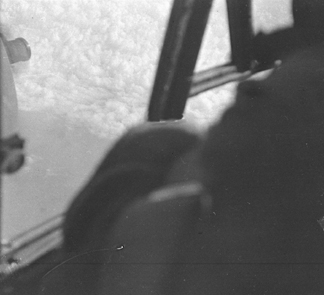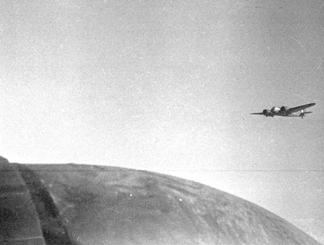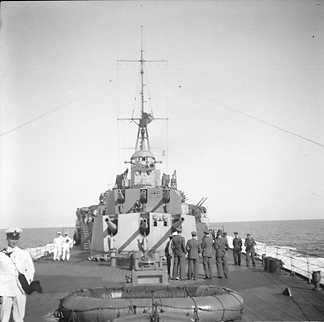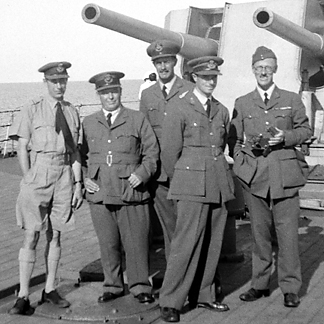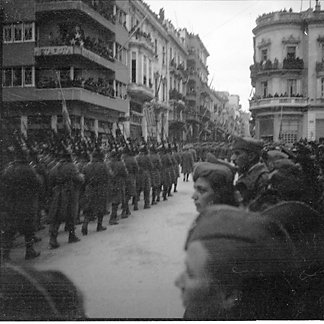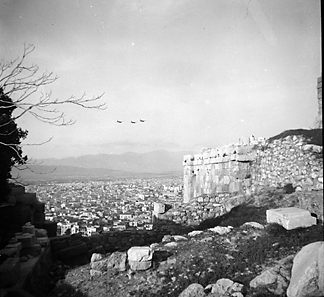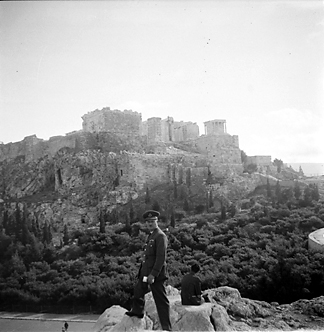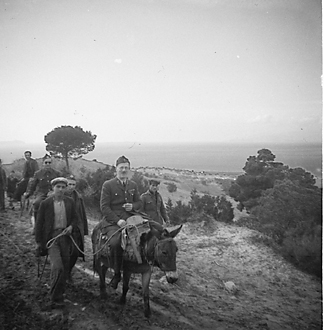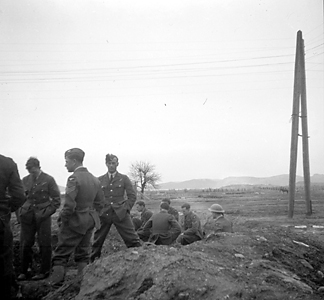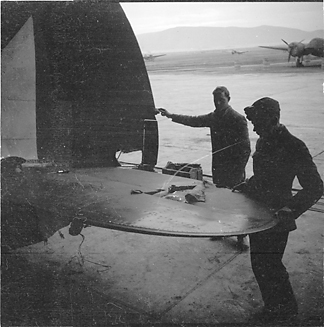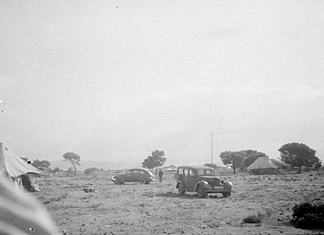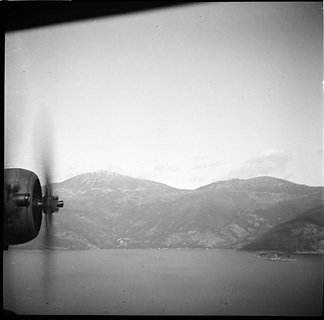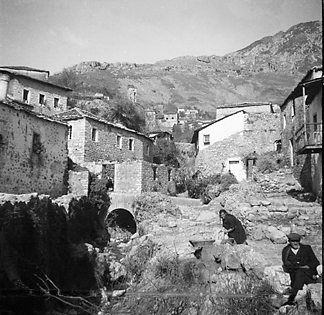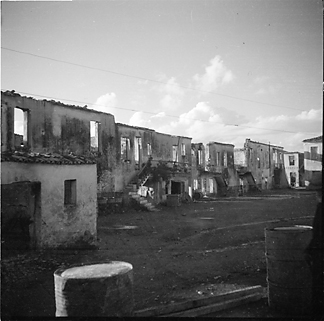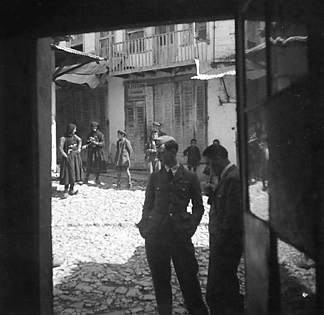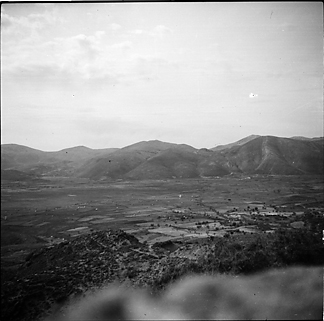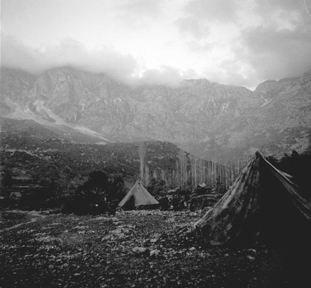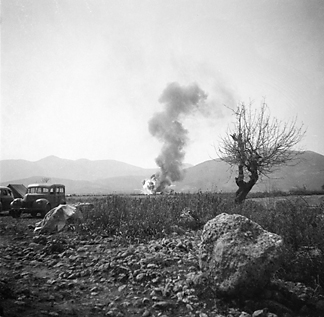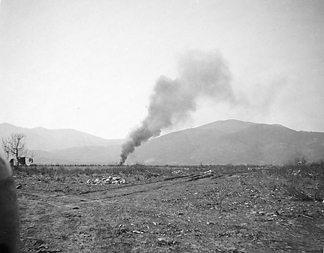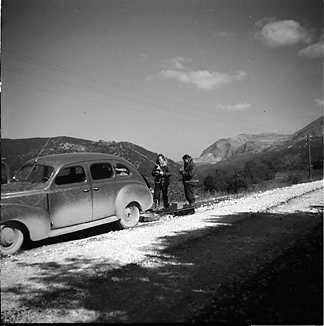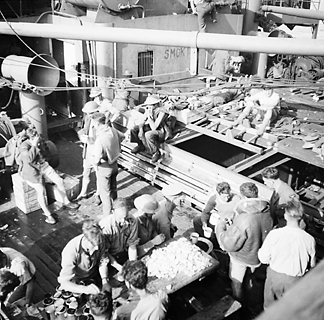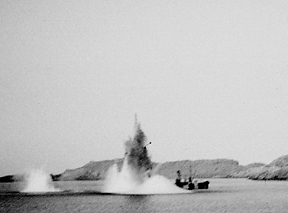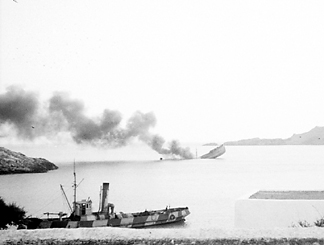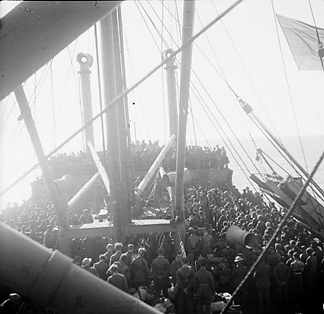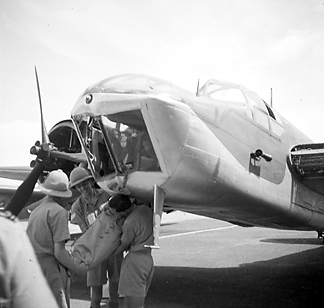 |
 |
||||||||||||||||||||||||||||||||||||||||||||||||
|
Squadron Leader HF Squire MRCS LRCP 72075 RAF 1893—1961 Born in late 1893, Henry Fremlin Squire was a medical student at Caius (Gonville and Caius College, Cambridge) when the First World War came in 1914. Leaving his studies for the War, he went with the St John and Red Cross Unit to what was then Serbia. There they set up a Surgical and Medical Hospital at Skoplye (Skopje, capital of modern Macedonia), working under difficult conditions in the midst of a typhus epidemic. Returning to England in 1915 in ill-health, Harry Squire resumed his medical studies and qualified as a surgeon. His brother was already a pilot in the RAF, which Service Squire now also joined. Postings to RAF stations like Manston and Hawkinge of World War II fame followed. Demobilised, by 1922 he had turned to general practice in Huddersfield, eventually choosing the life of a country doctor in a small Sussex village for the last years of peace. When World War II came, “Doc” Squire was ready, having already wangled his way into the RAFVR. He was to spend a year with 211 Squadron, in the Western Desert and again in Greece. Along the way, he took a considerable number of photographs. The 2¼in square negatives he filed meticulously in Kodak glassine negative files, briefly indexed by place and in pretty much date order.
Return to service In 1939 he was called up for full-time service, and found himself an MO (Medical Officer, with the customary RAF sobriquet “Doc”) at that plum of stations, RAF Tangmere. But even in the illustrious company of No 1 and No 43 Squadrons, Air Force doctoring in the Phoney War period left him somewhat restless. His thoughts turned to his past experience in the Balkans and the possibility of turning that to account. To the Middle East
A break en route to Marseilles during the Phoney War.
The sights of Egypt were popular subjects for men far from home. Here Harry Squire has captured a good exposure, no mean feat in the air then, showing the Old Kingdom (c4500BP) pyramids of Khafre or Chepren (left) and Menkaure or Mycerinus (right), looking south. Exotic in its way but even then, the Cairo tram service ran to within 400 yards of the field. This shot may have been taken from the Valentia flight out to Dabaa.
The parade ground, with numerous ordered files of airmen standing at ease. To the right, blast walls surround an underground facility. In and around the hangars in the background, four Bristol Bombays of 216 Squadron RAF, including SH-N and SH-K. There are several hundred men on parade in this shot. With the Greyhounds of the desert...
Squire was not the sort of man to sit back and wait for patients with a bottle of aspirin and a pannikin of Gentian Violet to hand. A practical fellow alert to the conditions around him, he took an active interest in camp hygiene and in practical medical arrangements, as well as taking on the role of messing officer.
War came soon enough to the Greyhounds of the desert and “Doc” was on hand to snap their first raid in June 1940. The target was El Adem. Mike Sainsbury was close by to photograph the final moments before the dawn take-off. Squire recorded this shot as their first raid, though the lighting here seems to be late morning, not dawn.
Much of the tentage had been in RAF ME stores for many years. Squire found the names of World War I servicemen in his own tent, which is here seen with roughly applied colour and brush camouflage against Italian attentions. He had toured the Dabaa vicinity with S/L JWB Judge, the Australian CO, seeking a better and less congested base for the Squadron. Quotafiya I, even closer to the sea than El Dabaa, was cooler and still convenient.
From Dabaa, the beach was a mile and a half away by truck and swimming was a frequent refreshment. At Quotafiya, the camp was right on the cliff tops above the beach.
Late in August he wangled a back seat to Derna, with GF in L8523 on a six aircraft operation taking some 5 hours return. He managed a “forbidden” photo above the clouds. On the trip back, the starboard engine failed while out to sea. Diverting to Sidi Barrani, the port engine failed as they landed.
The Italians visited by night to drop a variety of nuisance ordinance, from the small anti-personnel “thermos” bombs to these delayed fuse affairs. A bomb-clearance party checked the runways each morning, exploding the bombs by rifle fire or by the simpler expedient of dragging a cable between two trucks. Len Cooper also depicted this job, and Len Abbs described it. ...and Greece
Cooler at sea, they’ve broken out the best blues. Left to right: Flying Officer in tropicals, P/O "Willie" Williams (IO) in old style cap, probably P/O Observer Eric Bevington-Smith RAFVR, RAFVR non-aircrew Officer, RAFMO F/Lt HF Squire RAFVR. HMS Gloucester was one of the Southampton class of 6in cruisers of late 1930s build. She was later to be lost in the defence of Crete, in the course of an attempt to recover survivors of the destroyer Greyhound. She sank after sustained Luftwaffe attacks on 22 May 1941 with very heavy loss, only 85 of her complement of 807 surviving. Shortly afterwards, HMS Fiji was also lost. In the cold December days at Menidi, Doc made himself busy in a variety of ways, ministering to his charges and making time to visit the sights of the ancient world. The days were pretty full. Then in late December, with another MO falling ill, he was posted to 30 Squadron at Elevsis, where they were operating with two flights of Mark I Blenheims and one flight of the Mark IF fighter version.
General Ioannis Metaxas, the Greek Prime Minister, died on 29 January 29 having presided over the repulse of Italian ground forces far into Albania.
A veteran pilot, from his ribbons and wings.
One of an RAFMO’s grimmer tasks: recovering 30 Squadron casualties from the field.
Task completed, thanks and respects are exchanged with the locals at a Taverna. There are men of three services in this photograph, of the RAF and of Greece. The man in sunglasses on the left bears a remarkable resemblance to Constantine John Manussis, later Greek liaison officer and interpreter to 211 Squadron.
A grim group of airmen doing what all servicemen must on the verge of action: wait. The two Sergeants on the left facing the camera seem to be Wireless Operator/Air Gunners rather than Observers by their badges. The group seated in the trench includes a Corporal (2nd right) and a Sergeant (3rd right). Difficult to be certain, as 30 Squadron and 38 Squadron both spent time at Elevsis and both had Sergeant air gunners, however, given Squires’ attachment date and the place, it is likely that these are 30 Squadron airmen.
The airframe lads of 30 Squadron re-covering the Port elevator of a hangared Blenheim.
With 230 Squadron part of his “patch” as RAFMO at Elevsis and Scaramanga, Doc was kept busy but found time to fix himself another jaunt aboard a Sunderland reconnaissance flight. With 211 Squadron at Paramythia
Hardy mountain folk: the woman washes clothes, the man watches
The Italian occupation of late 1940 was brief but savage.
The women in modest and practical mountain dress: head scarf, felt slippers, heavy but decorated dresses. The woman on the left seems about to break into dance, her companion is spinning wool yarn. Both are smiling. In the foreground, two RAF officers, a be-ribboned pilot on the left and a non-flying man on the right.
The original shows scattered tents of the camp and a few aircraft to centre and left on the valley floor, which today is dotted with small orchards and houses. The village is out of frame, away to the right on the lower slopes of the Valley’s north face.
Doc’s bold exposure gave a negative of daunting thinness which still resulted in this stunning atmospheric shot. The Squadron’s aircrew flew and fought from the Valley of Fairytales in these conditions.
Apparently L8531 exploding, 22 March 1941, also recorded by my father CFR Clark. There is uncertainty about the number of raids and their precise dates, even in W Wing HQ narrative reports at this date. See also RJ Dudman, C Hansford.
In early April the German advance made their situation grave. The 211 Squadron CO Irvine sent Squire to set up a rear base at Agrinion. After the loss of Irvine on Easter Sunday, 13 April 1941, Griffin (pro tem commander of the Squadron), Squire and Dundas were key figures in the withdrawal from Paramythia. For his part in receiving the Royal party at Paramythia among withdrawing JKRV aircraft, Griffin was awarded the Order of the White Eagle by HM Peter II of Yugoslavia.
Taking a very active part in the evacuation of the Squadron to Agrinion and from Greece, Squire was both well-prepared and fortunate: he was able to keep both camera and negatives, while taking some remarkable action shots at the last gasp in Greece.
The first sea-leg of evacuation: they arrived safely in Kithera. There, the orders were to wait so they found accommodation ashore. That evening a Luftwaffe reconnaissance aircraft came to observe proceedings.
Next morning, it took the Germans several waves of aircraft over an hour and a half to mortally wound the ship.
It was the next morning before she sank. The Greek Navy tug (foreground) ran ashore, almost undamaged. In the end it was the Royal Navy to the rescue: they were picked up by HMS Auckland that night. Arriving in Crete, they transhipped to a transport for the final leg to Alexandria.
Returning to Egypt and a period of leave, Harry Squire was posted first to Shallufa near the Suez Canal and then once more to Heliopolis. Base station service now palled somewhat after the adventures in Greece. Soon, though, the chance of postings to Cyprus and Malta came, with advancement to Senior Medical Officer and Squadron Leader in June 1941.
Here, in an undated shot, the lads find a way to insinuate a stretcher into a Mark IV Blenheim through the forward emergency hatch. Missing glazing from cockpit and nose and a panel from the leading edge, the state of the aircraft suggests an airframe reduced to Ground Instructional Airframe status (and with it a date late in Squire’s time in the Middle East). D Day and after Returning to the UK himself that October, Harry Squire was somewhat rueful to have have been recalled, missing out on a possibility of service in the Far East. However, by early November 1944 he had thought things over. Veteran of two World Wars with service at Home, in the Middle East and in Europe, from Henfield he wrote to his family of his decision to return to private practice, remarking: “It’s time that the old grandfather settled down”! Retaining his rank of Squadron Leader, Squire resigned his commission with effect from 14 December 1944 (London Gazette No 26957). At home again in rural Sussex, his days were well filled with family, his country medical practice and, after the war, writing histories of cricket in the village and in Sussex. Harry Squire died, aged 67, in 1961. Harry Squire’s sons John and David went on to serve in the RAF: John as a doctor, and David as a pilot. Today John lives in the same small village that his father had moved to in the early 1930s, while to David fell the task of editing his late father’s manuscript of RAF service, Middle East Scrapbook by RAFMO, published in 1997. It was by chance, you might call it, that in June 2005 I came across a copy of this remarkable tale and that I was fortunate enough to be able to get in touch with John and David Squire. It is thanks to their kindness and generosity that this page is possible, illustrated with their father’s photographs from the original negatives so long and carefully stored in the little Kodak albums that were once part of a photographer’s kit. Compiling the story of No 211 Squadron is a rich mixture of appreciation, sadness, fascination, and humour. Of all the tasks in this long adventure, the scanning of Doc’s negative collection has been one of the most pleasing. Sources London Gazette issues 1937—1944 www.211squadron.org © D Clark & others 1998—2025 |
||||||||||||||||||||||||||||||||||||||||||||||||
